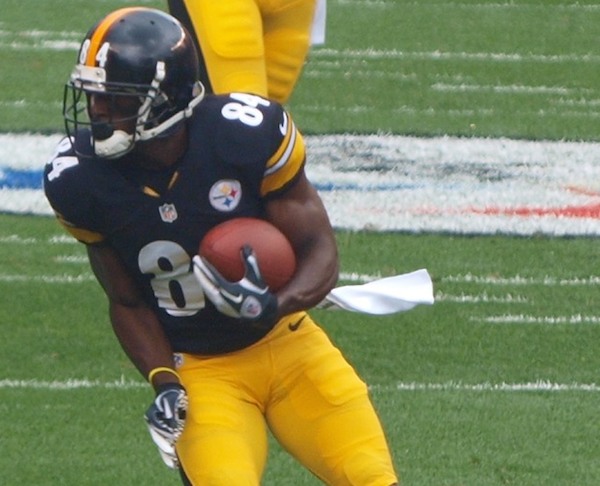When the Pittsburgh Steelers took possession of the ball on their own 30 yard-line with 2:59 left in the game, they still had a glimmer of a chance to win or tie the game before time ran out. They were down 28 to 14 and would have needed two touchdowns and two extra points to tie or two touchdowns, an extra point, and a two point conversion to win. Time was not on their side, but they did have all three of their timeouts and the two-minute warning left to stop the clock. They also have a great quarterback in Ben Roethlisberger and a potentially even greater wide receiver in Antonio Brown. They had a chance even if it was a slim one, but they needed to score quickly, leaving enough time on the clock for an onside kick (a kickoff play designed to get the ball back instead of giving possession to the other team) and a Hail Mary (a last-ditch attempt to score a touchdown from very far away.)
One thing is a series of posts that examine a small part of a sporting event to explain and explore its meaning in a way that’s accessible to sports fans and laypeople alike.
They moved the ball well down the field but thanks to a phantom penalty call that took back a 29 yard pass play and a sack that lost them another seven yards and valuable time, by the time they used their third timeout, it was clear to everyone involved that they were not going to win. With only 11 seconds left, the Steelers still needed to score a touchdown, successfully convert an onside kick, and then score another touchdown. That’s almost an impossible task. Still, the Steelers kept trying, and with seven seconds left, they did manage to complete the first of those three tasks: they scored a touchdown.
Unfortunately, the NFL doesn’t allow websites to embed video, so you’ll have to watch the play on YouTube. Go watch it, but come back! Brown, the excellent wide receiver mentioned above, runs a corner route (football speak for running straight up the field and then angling diagonally toward the sideline or corner of the end-zone) and catches the ball before his momentum takes him out-of-bounds. It’s a beautiful play, but it took five seconds, leaving only two seconds on the clock. Even though the extra point attempt is officially untimed, meaning it doesn’t take any time off the game clock, two seconds is still not enough to run an onside kick and still have enough left over to run even a single pass play. The game is logically over, the Steelers have lost, the Patriots have won.
But listen to the announcer, Al Michaels. Here’s what he has to say, “That might make a couple of people happy in a minute here, ’cause Malcolm Butler gets beaten and makes it an eight point game here for the moment. There are a couple of things that are going to be in play here right now.” And a few seconds later, “Well, speak about tangentially interested, there are a few people more than tangentially interested right now.”
What is he talking about? Why would this play, which could not possibly change the outcome of the game, be important to people? The answer lies in two activities that have an important symbiotic relationship to the NFL: fantasy football and gambling.
For fantasy football owners, (if you don’t know how fantasy football works, read the Dear Sports Fan post explaining it) a touchdown counts just as much in the third to last second of the game as it does in the middle of the game. A touchdown in a lost cause counts as much as one in a close game. In fact, garbage time, as time in a lost cause is called in fantasy football language, can be an important tactical consideration. Players on teams that are often losing by large margins tend to accumulate fairly good statistics as their opponents care a little less on defense or even rest some of their better players.
As for gambling, the Steelers late touchdown was an even bigger deal. One of the most popular ways to gamble on football is betting a line. When you do this, you’re betting not on one team to win or lose the game, but on one team to exceed the expectation that a bookmaker has set for them. Before the game started, most bookmaker’s expectation for the Patriots was that they would win by seven points. Therefore their expectation was that the Steelers would lose by seven points. When the Patriots were up by 14, with only a couple of minutes to go, people who had bet on the Patriots (to exceed their expectations and win by more than seven points) were in a position to win money. That last second touchdown, brought the score to 28-21, a difference of exactly seven points. This matches the pre-game expectation or line set by bookmakers. This is called a push, when the result matches the line, and no one wins anything! Gamblers get their money back and the bookmakers are out whatever their overhead for facilitating the transaction is plus marketing costs, etc.
The last second touchdown by the Steelers was meaningless to the outcome of the football game, it was important to fantasy football players and gamblers, two very important groups of people who follow football.

